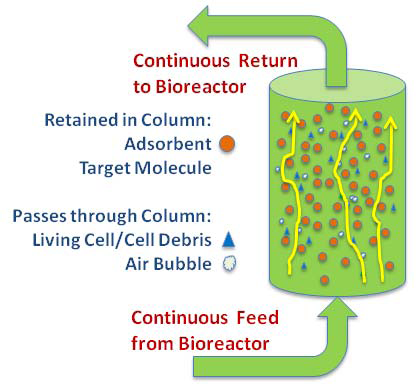As a result of cytotoxicity and/or poor net yields,
microbial biofuels may typically only accumulate to low final concentrations in
culture media. Their efficient, rapid, and thorough recovery from the culture
medium is a universal challenge to the biotechnology industry. Solid-phase
adsorption is commonly employed to provide high efficiency separations of
microbial products from culture media. However, traditional chromatographic
applications are poorly compatible with the in situ recovery of biofuels.
Researchers at Arizona State University have developed a
novel, expanded bed adsorption and elution process for the recovery of biofuel
products or precursors from cell culture medium. This is accomplished via an in
situ and biocompatible approach to enable high and continuous productivity.
Separation can be achieved in a manner that does not disrupt cell growth,
precludes the use of special cell separation equipment, and requires only
minimal energetic input.

Potential Applications
- Recovery and purification of:
Benefits and Advantages
- Biocompatible - achieves separation in a manner
supporting continued cell growth and productivity
- Economical - a low energy and low cost process
- In situ - relieves product inhibition and/or reduce
contamination through continuous product removal
- Adaptable – adsorbent can be easily substituted to meet
specific separation needs
- Scalable – can be sized to meet process requirements
- Modular – External process design amenable to retrofit
applications
- Increases interstitial spacing between adsorbent
particles resulting in lower required pressure drop
Download Original PDF
For more information about the inventor(s) and their
research, please see
Dr. Nielsen's laboratory webpage